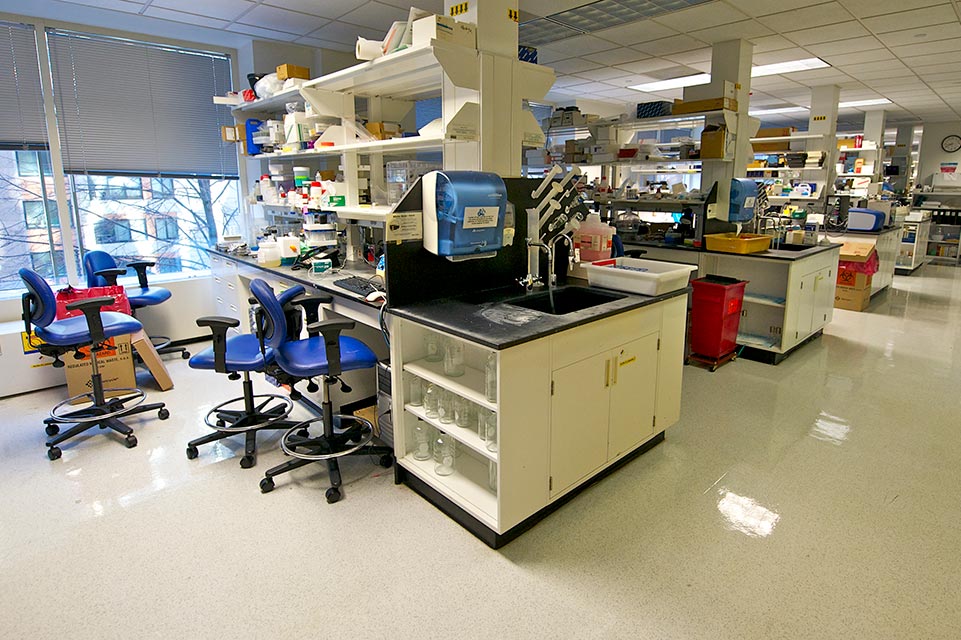Shriners Children’s Boston Researchers at Forefront of Discovery for Burn Care Innovations

The lab at Shriners Children's Boston
The team at Shriners Children’s Boston knows how important the assessment of a burn wound is to making the right treatment decisions. Burn depth and the health of the surrounding tissue are factors when deciding on the plan of care. Some wounds may require the application of creams and pain medications, while more severe burns could require the removal of the damaged tissue, excision and skin grafting. Despite the importance of these decisions and the role they play in positive patient outcomes, current clinical evaluation of burn wounds relies on either subjective visual assessment or more invasive, painful biopsies for our pediatric patients.
It is estimated that approximately 400,000 non-fatal burn injuries occurred in the U.S. in 2017, with 21% of those in children under the age of 15.1 Rapid wound healing and wound closure after burns are some of the most important measures of survival and positive long-term outcomes.
At Shriners Children’s Boston, a team of investigators led by Shannon Noella Tessier, Ph.D., is testing a new application for an existing device that was originally developed to identify chemicals and is currently being tested as a method to evaluate organs prior to transplantation. This handheld non-invasive device, the Resonance Raman Spectroscopy (RRS), uses a light source to assess organs prior to transplant to predict the viability of the organ. The goal is to identify organs that may not have previously met the benchmark for transplantation.
Researchers have discovered that this technology can also be used to provide information about a burn wound. The RRS device has a small footprint, single-click operation, and produces results in three minutes or less. It uses a light source with a safe precise wavelength that detects specific biomarkers, which are measurable characteristics. One biomarker can tell you if the mitochondria in cells, also known as the “powerhouse” of cells, are working properly. This marker may be able to predict how well a wound will heal over time. The device will show how many mitochondria are working properly versus those that are damaged, since damaged ones cannot promote wound healing. The second biomarker measures the hemoglobin (a protein in the blood), which signals revascularization, an indicator of the capacity for healing.
The team, which also includes Shriners Children’s Boston researchers Curtis Certrulo, M.D., and Korkut Uygun, Ph.D., is using animal models to test and measure the effectiveness of this instrument for assessing burn wounds. Once they have gathered the data to show proof of concept they will begin clinical trials, with the goal of using the RRS for patients in the clinic as part of regular practice. These metrics can be used to assess wound healing, closure and scarring. For children with burn injuries this means pain-free assessment with fast and accurate information that will guide their treatment.
The Resonance Raman Spectroscopy project, led by Dr. Tessier and her team, illustrates how research at Shriners Children’s Boston leads to real world, tangible improvements and better outcomes for the children we treat.
1Source: Centers for Disease Control and Prevention, C. Web-based Injury Statistics Query and Reporting System (WISQARS)
Keep In Touch
Join our mailing list to stay up to date on everything that's happening at Shriners Children's.
